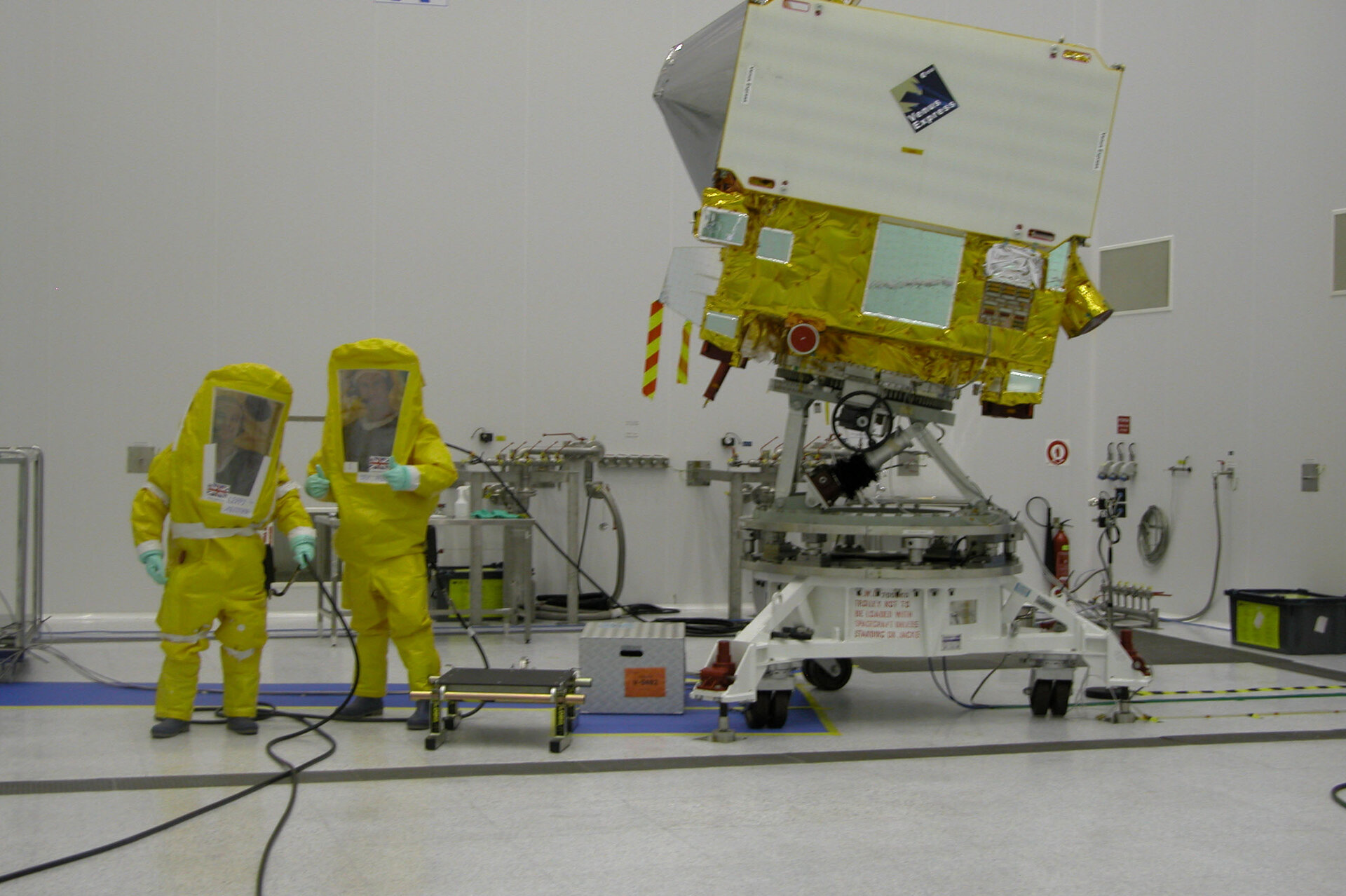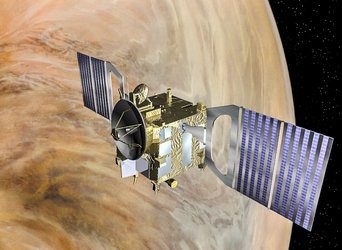Venus Express propellant loading completed
ESA's Venus Express spacecraft is now fuelled and ready for transport to the next facility at the Baikonur Cosmodrome, Kazakhstan, dedicated to installing it onto the launcher upper-stage.
To be efficiently trapped by Venus’s gravity, the spacecraft has been equipped with a ‘bipropellant’ propulsion system similar to the ones used on board of modern telecommunication satellites. It mainly differs by the size and number of propellant tanks. Venus Express has two tanks of more than 260 litres capacity.
The gravity of Venus, almost the same as Earth’s, is about eight times higher than that of Mars. This, plus the fact that the gravitational pull of the Sun is stronger at Venus, means that Venus Express needs more energy to brake and be captured into orbit around Venus.

For Venus Express, a total of 570 kilograms of propellant has to be loaded in the tanks (about 20% more than Mars Express). The propellant mass is almost half that of the overall spacecraft mass! In April 2006, the spacecraft’s main engine will use more than 70% of this propellant during the very long Venus Orbit Insertion burn (where the engine will fire for 53 minutes).
The propellants to be loaded, nitrogen tetroxide oxidiser (NTO) and monomethylhydrazine fuel (MMH), are very toxic, corrosive and flammable chemicals. Working with them requires specific health protection precautions and detailed safety procedures in close co-operation with launcher facility operators.
Loading of the propellant tanks with fuel began early in the morning of 27 September. All activities taking place in the Hazardous Processing Facility (HPF) were managed and monitored via camera and special intercoms from a remote control room located in another building.

Because of the dangers of handling these propellants, access to the area was closed and doctors, ambulance and firemen were on stand-by.
The propellant loading operators from Astrium Stevenage wore special protective suits (called SCAPE suits). SCAPE stands for Self-Contained Apparatus Protective Ensemble, like a space suit but used for hazardous operations during ground processing.
The NTO oxidiser loading went perfectly and was completed within six hours. Before switching to the MMH fuel loading, one day was spent for cleaning the facility’s common ducts and pipes so that the process could start again on 29 September. After another six hours, the spacecraft was fully loaded with propellant and the facility could be cleared of all hazardous vapour.
The Venus Express spacecraft is now ready for transfer to the Upper Composite Integration Facility at Baikonur for stacking onto its adapter and then onto the Soyuz launcher’s Fregat upper-stage.







